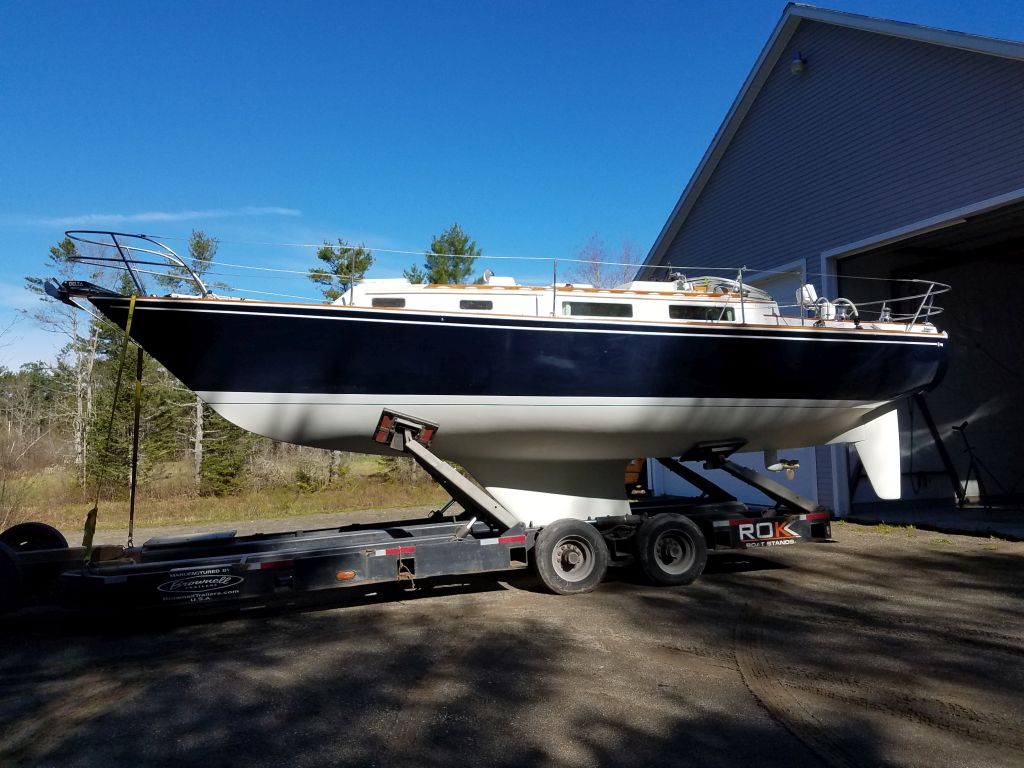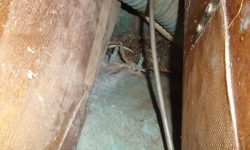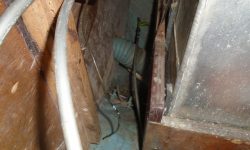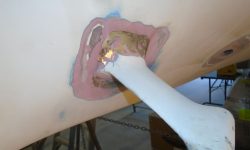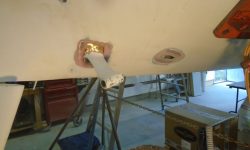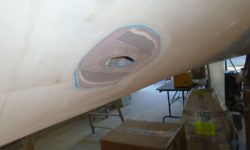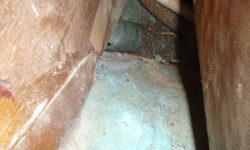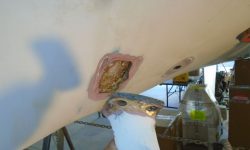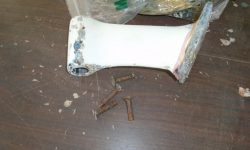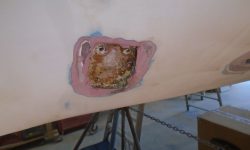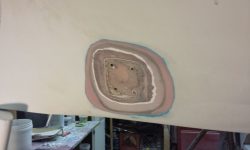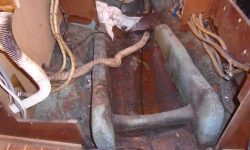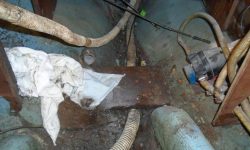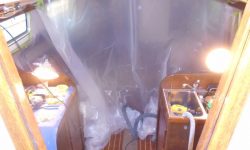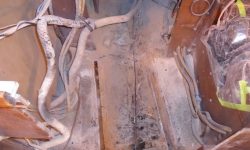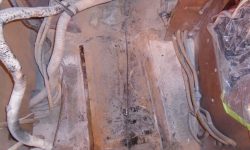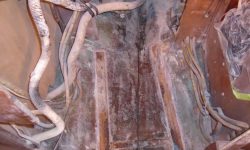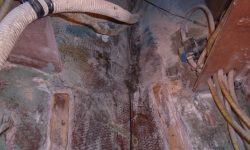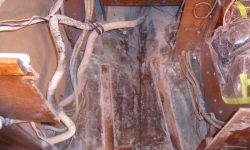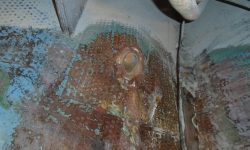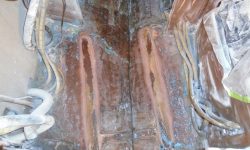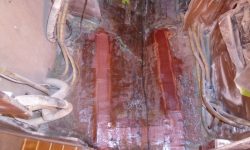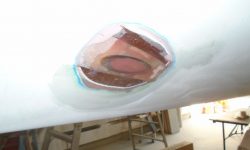September 21, 2016
Acadia 3
Wednesday
The propeller shaft support strut was now obsolete and no longer required, so I turned to its removal. From inside the boat, there was a narrow slot providing marginal access to the fixing bolts and nuts. My initial efforts to remove the nuts and free the strut proved fruitless, as the bolts spun on the outside when I attempted to wrench off the nuts within.
Back outside the boat, I used a grinder to remove the paint and fairing compound that covered the base of the strut where it was secured to the hull, exposing the flathead screw heads and the edges of the strut base itself. This confirmed for me that the strut used standard bolts, not integral studs. While I had the grinder going, I ground a beveled area around the nearby stern tube opening, which I’d also be filling and patching.
Back inside the boat, I used a reciprocating saw and long blade to cut off the nuts and bolt ends securing the strut. Access was limited, and I had to remove a nearby cleat on the bulkhead so the saw body had enough room to reach all four bolts. Since the bolts were bronze, cutting was fairly easy, and with the nuts and excess bolt length removed, I could easily spin out the bolts from outside–they seemed to be threaded through the hull–and remove the strut itself. Afterwards, I prepared the hull around the old strut location (which was recessed into the original laminate) by grinding a beveled area about the location.
The original engine foundations were in excellent condition and were strongly installed, but the new installation required their removal, so I spent some time preparing tools and equipment for the job. Because cutting and grinding away the old fiberglassed engine beds would make a mess, I installed plastic curtains to help prevent dust from entering the saloon and forward parts of the boat, and also covered over the galley and nav station cabinets with plastic.
The engine foundations were indeed very strong, and removing them proved to be a lengthy and arduous process. As ever, access was tighter than one might like, so fitting in grinding wheels and saw blades required various positions and care to prevent damaging any of the nearby installations and critical parts of the tool operator. The foundations were built from laminated plywood heavily encapsulated with multiple layers of fiberglass, and heavily fiberglassed to the hull. It was a nice installation that had held up well over nearly 40 years, and the engine beds fought removal to the end. I cut through the fiberglass as much as possible using a grinder and cutoff wheel, then used the saw (with fewer good blades on hand than I’d hoped and planned to have) to cut through the wood and, as needed, additional fiberglass to the point that I could finally pry off the heavy foundations.
This left behind remnants of wood in the now-recessed areas inside of the old tabbing, and I pried out the wood and rough-cleaned the area before proceeding. Then, to smooth out the cut edges of the old fiberglass and prepare the area for new work, I ground away the remains of the tabbing to the extent possible, leaving the edges of the old foundation locations flush with the surrounding hull. There was no hope of removing the old foundation tabbing left on the hull–nor was there a need–so I strove for as flat and flush a result as possible, other than the recesses where the wood had been glued to the hull during original construction. I also cut and ground away the inside portion of the stern tube, electing to leave the heavily-glassed bump at the aft end where the builders had done a nice job fairing and glassing in the original tube.
This chore made a mess and took quite a bit of time, but after cleaning up the area thoroughly, I solvent-washed the now-flush engine bed locations and applied some thickened epoxy filling material into the grooves left behind by the old plywood, bringing these areas up level with the surrounding hull so I’d have a relatively consistent and smooth substrate from which to work going forward. I also masked over from inside and filled the old stern tube opening through the hull, the first step in patching this area permanently.
Total time billed on this job today: 7.5 hours
0600 Weather Observation:
50°, clear. Forecast for the day: Sunny, 80s


